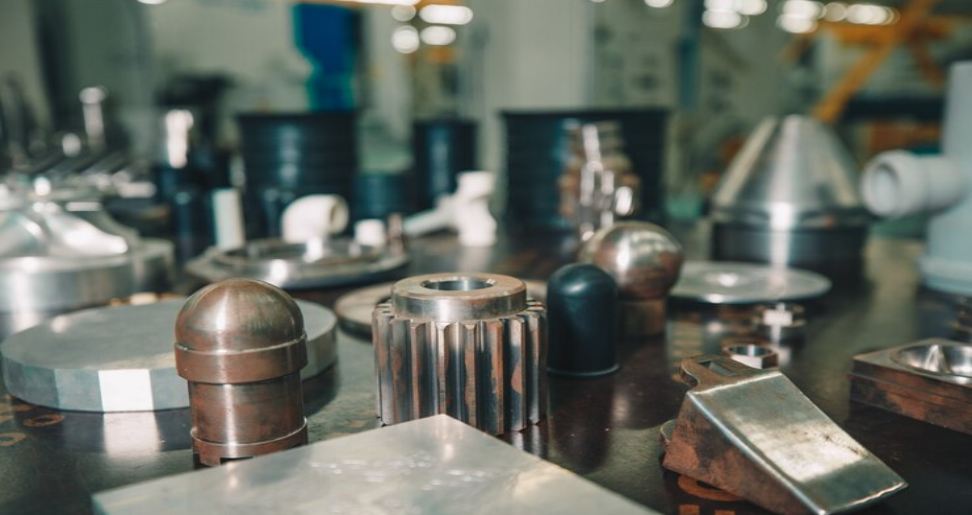China’s mold manufacturing industry has become a global powerhouse, renowned for its high production volume, competitive pricing, and continuous advancements. A key driver of this success is their mastery of overmolding, a revolutionary process that combines multiple materials within a single mold to create innovative and functional parts.
China’s mold manufacturing industry has carved a remarkable niche in the global landscape. This success stems from a multi-faceted approach that combines established techniques, relentless innovation, and a focus on efficiency.
Let’s explore how China’s overmolding expertise is transforming global manufacturing.
The Power of Overmolding:
Overmolding offers several advantages over traditional manufacturing methods:
Enhanced Functionality: By combining different materials with unique properties, over mold process allows for parts with superior strength, grip, electrical conductivity, or aesthetics, depending on the chosen materials.
Design Freedom: Overmolding enables the creation of complex and intricate geometries, with features seamlessly integrated into the final part. This opens doors for innovative product designs.
Reduced Production Steps: Overmolding eliminates the need for separate assembly steps for components made from different materials, streamlining production and minimizing costs.
Improved Quality and Consistency: The controlled environment within the mold ensures consistent material bonding and precise part dimensions, leading to high-quality and reliable products.
China’s Role in Overmolding Innovation:
China mold making industry plays a pivotal role in the advancement of overmolding for several reasons:
Cost-Effectiveness: Chinese manufacturers offer competitive pricing for overmolding projects, making this technology accessible to a wider range of companies, especially for high-volume production runs.
Technical Expertise: Chinese mold makers have honed their skills in overmolding techniques, including multi-shot molding (integrating more than two materials) and insert molding (embedding metal components). This expertise allows them to tackle complex overmolding projects across diverse industries.
Material Innovation: China actively explores new materials for overmolding applications. This includes bio-based materials for sustainability, conductive plastics for electronics integration, and high-performance thermoplastics for demanding applications.
Revolutionizing Industries:
Overmolding’s impact is felt across various sectors:
Consumer Electronics: Overmolded components with soft-touch grips and improved aesthetics enhance user experience for smartphones, laptops, and other devices.
Automotive Industry: Overmolding allows for the creation of lightweight yet durable interior parts with integrated controls or soft-touch surfaces.
Medical Devices: Overmolding enables the combination of biocompatible plastics with strong structural components for medical instruments.
Sporting Goods: Overmolding creates sports equipment with enhanced grip, shock absorption, and improved aesthetics.
Leading the Way: Top Chinese Overmolding Companies:
Several Chinese companies are at the forefront of overmolding technology:
JIGNXIN: Specializes in custom overmolding solutions for electronics, appliances, and automotive industries. They offer two-shot and multi-shot capabilities with a focus on high-precision and stringent quality control.
Richfields Corporation: A leader in plastic injection molding and overmolding, offering a one-stop shop for design, mold development, and production. They cater to diverse industries and emphasize customer collaboration for optimal results.
Precision Machining Services (JPM): Specializes in custom plastic injection molding and overmolding, delivering high-tolerance parts with exceptional surface finishes. They excel in creating overmolded components for the medical and electronics sectors.
Looking Ahead: The Future of Overmolding in China:
As China continues to be a leader in overmolding, we can expect exciting advancements in these areas:
Sustainable Practices: Chinese mold producers are increasingly focusing on eco-friendly materials and processes for overmolding, promoting sustainability within the manufacturing chain.
Automation and Robotics: Further integration of automation and robotics will enhance production efficiency, improve consistency, and potentially enable mass customization through overmolding.
Advanced Materials and Techniques: Continuous research and development efforts will lead to the exploration of new materials and advanced overmolding techniques, pushing the boundaries of design and functionality in future products.
Conclusion:
China’s mold manufacturing industry has emerged as a champion of overmolding technology. Through their focus on cost-effectiveness, technical expertise, and material innovation, Chinese mold makers are revolutionizing global manufacturing. Overmolding allows for the creation of innovative and functional parts, streamlining production processes and leading to the development of next-generation products across diverse industries. As China continues to invest in research and development, we can expect even more groundbreaking advancements in the exciting world of overmolding.
Read more:
- How Much is My House Worth Trulia?
- 11 Dining Room Curtain Ideas In 2024
- Top 10 Laundry Room Doors To Watch Out For – Home Improvement

